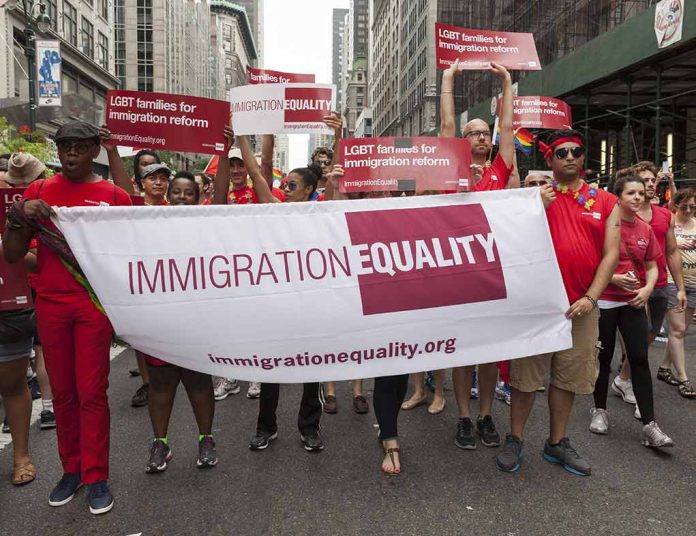
Trump’s ambitious deportation plans face a mountain of challenges, from legal hurdles to logistical nightmares.
At a Glance
- Trump pledges mass deportations
- Previous deportation efforts fell short due to legal, fiscal, and political obstacles
- Plan faces significant challenges including legal rights, detention capacity, and funding
- Public opinion divided, with protests erupting in major cities like New York
- Economic impact could be severe, potentially shrinking GDP by 4.2% to 6.8%
Trump’s Grand Vision Meets Reality
Donald Trump’s campaign promising to deport millions of undocumented immigrants has reignited a fiery debate on immigration policy. While the rhetoric is bold, the realities of implementing such a massive operation are daunting. Trump’s previous presidency demonstrated a significant gap between ambitious deportation goals and actual results, with annual deportations never exceeding 350,000 compared to Obama’s peak of 432,000 in 2013.
The plan involves invoking the Alien Enemies Act, a 1798 law, to deport noncitizens from countries the U.S. is at war with. Trump also suggests using the National Guard and sympathetic governors to carry out deportations in states that refuse to participate. However, these strategies face numerous obstacles.
Legal and Logistical Hurdles
The proposed deportation plan encounters significant legal challenges. Immigration law provides certain rights to undocumented individuals, and courts have consistently upheld these protections. Additionally, the logistics of detaining and deporting millions of people are staggering. ICE is currently funded for only 41,500 detention beds, raising questions about where these individuals would be housed during proceedings.
Former ICE Director Tom Homan, now Trump’s “Border Czar,” suggests a more targeted approach, focusing on “public safety threats and the national security threats first – because those are the worst of the worst.” This strategy might be more feasible but falls short of the sweeping deportations Trump has promised.
Economic and Social Impact
The economic consequences of mass deportations could be severe. Studies suggest that such a move could shrink the GDP by 4.2% to 6.8%, exacerbating labor shortages in key industries. Moreover, 70% of households with undocumented members also include legal residents, meaning the social fabric of many communities could be torn apart.
Public opinion on the issue remains divided. While there is some support for deportations, many Americans prefer pathways to citizenship for long-settled undocumented immigrants. This division is evident in the protests that have erupted in cities like New York, where thousands have rallied against the proposed deportation measures.
Resistance and Resource Strain
Cities like New York, which have spent billions supporting undocumented immigrants, are likely to resist federal deportation efforts. NYC Comptroller Brad Lander has confirmed that the city’s sanctuary laws remain unchanged, stating, “Our local laws have not changed: the City of New York does not conduct immigration enforcement and City services are available no matter your immigration status.”
“Experts said Mr. Trump faces daunting, if not insurmountable, legal, financial and logistical hurdles to carry out deportations at the scale he has promised. It would most likely require the hiring of tens of thousands of new federal immigration officers, billions of dollars in appropriations from Congress and the construction of hundreds of new detention facilities.” wrote The New York Times.
The implementation of Trump’s deportation plan would require a massive increase in resources, including thousands of new immigration officers, billions in funding, and new detention facilities. With a divided Congress and limited federal resources, securing these assets presents yet another significant challenge to the realization of Trump’s deportation ambitions.
Trump’s recent re-election has caused illegals to begin protesting with the message clear “we are not leaving”. Now that the new ‘border czar” has been appointed, it is beginning to look clear that Trump meant what he said during the campaign trail that he wants illegals out.
Sources:
Trump’s goal of mass deportations fell short. But he has new plans for a second term
Immigration Advocates Prepare to Fight Donald Trump’s Mass Deportation Plan
Trump has vowed to stage the ‘largest deportation operation in American history’
NYC Immigrant Protests Signal Deportation Won’t Be Easy














